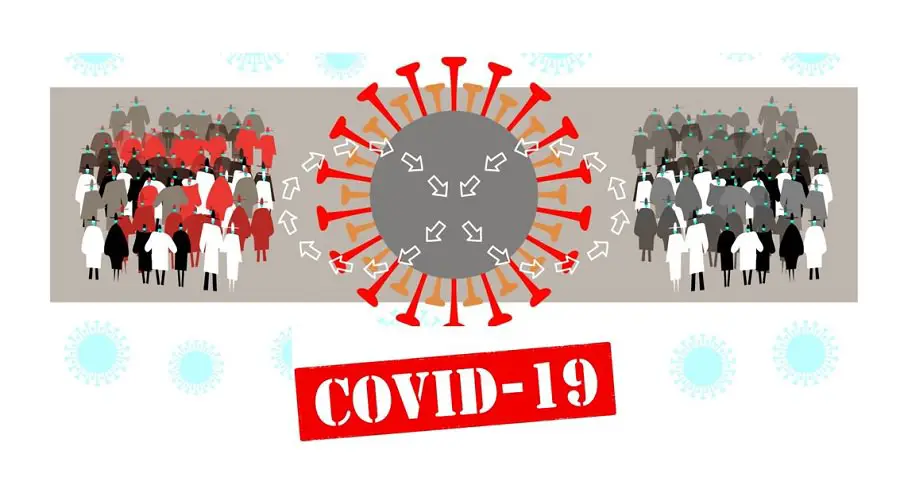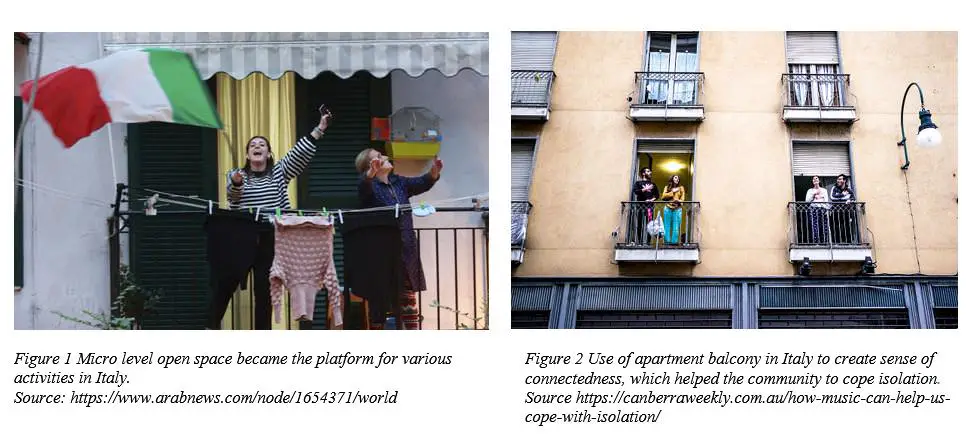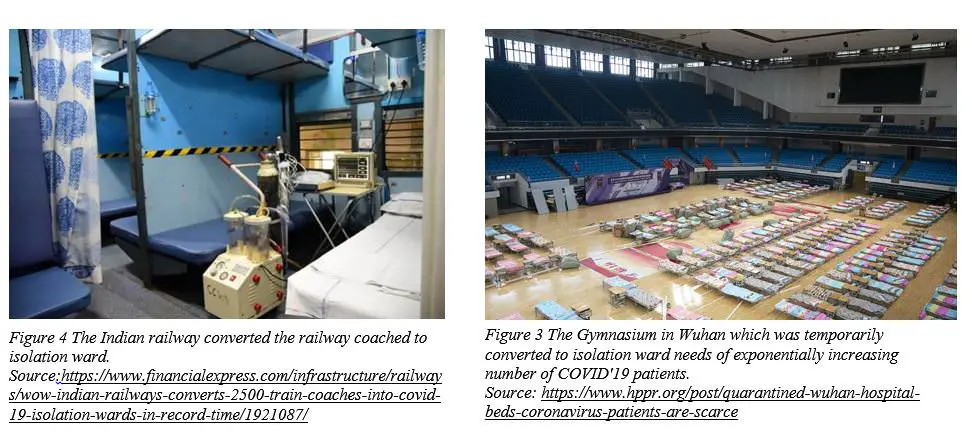“In the middle of difficulty lies an opportunity” -Albert Einstein
The harrowing reach of pandemics has always shaped cities and without a series of devastating global crises the urge for modern and new system has never been identified and materialized.
The declaration of Global pandemic as triggered by COVID’19 and everyone’s life has come to a halt. As the coronavirus sweeps across the globe, shutting down geographical borders around the world resulting in diverse range of social, political, economic and spatial consequences, including loss of lives, disruption to travel and trade, overnight altered lifestyle of people leading to changed behavioural patterns, suspended social life, and a digitally connected world. As we all continue to fight our battle against the rapid spread of coronavirus as a nation or as an individual by confining ourselves to bodily defined borders, modifying the way we work, move around, socialize and think about our surroundings, the most pressing question that remains unanswered is how this health crisis will leave its mark on the future of our cities and if any of these adjustments will continue to endure even after the pandemic is over.

Related Articles:
- The Migrant Worker in India’s Urbanization Trajectory
- Migrant Inclusive Planning Interventions | Problems, Failure & Strategies
- Urban Planning & COVID-19 | Density, Travel Demand, Water & Hygiene
A brief look at the past
As Rami el Samahy, professor at MIT’s School of Architecture and Planning, points out, “This won’t be the first time in history that cities and buildings will be reimagined or redesigned in response to an increased understanding of disease”. As the data states, major historic crises are the reason for dramatic and rapid urban transformation, the plague in Athens which happened around 430 BC instigated the alteration of city’s law and identity, to the devastating cholera outbreak in 1850 in London which created demand for modern sewerage system to carry waste water away, then the 19th-century New York’s reaction to the neglected conditions of overcrowded tenement housing and to the very recent Ebola epidemic outbreak across African continent questioning the rapidly globalizing world. Through ages, these global states of emergencies have challenged the way existing system works, the existing methods, and the way we think about our cities but nonetheless they have also carved way for identification of innovative solutions, new strategies and a prospect to envision different perspective providing a radical vision of hope.
COVID-19: What lies ahead of us?
The present crisis faced by our cities provides us with an opportunity to strategize and plan for the post-pandemic future cities. The current circumstances by eventually changing the relationship between people and their city, will pose a bigger issue in front of the planners, who otherwise have relied on the relative predictability of how people use their spaces to design cities. People’s perception and association with their city and surrounding is altering, planning decisions to move forward from here will depend on the understanding of how these spatial associations are transforming. From the dimension of built environment, crises like these don’t destroy the built structure as it might be in the case of a natural disaster such as earthquake but they disrupt the whole social and spatial relationship due to various imposed restrictions and prompts us to redefine various planning and design measures at various levels. One of these includes the need to rethink about urban densification which can meet the competing demands of both Public health and climate. The need to decongest the city centres which becomes the epicentre for these pandemic. From Landscape design point of view, there is an emerging need to focus on micro level greens and open spaces (residential levels) apart from macro level landscape spaces (large city level open spaces) which can allow people to have access to micro level green/ open spaces for recreation or to connect with neighbours even when there is an imposed restriction on the usage of macro level open spaces due to public health concerns. For example, balconies from Madrid to Mumbai, Chicago to Zhejiang and Hamburg to Alexandria have suddenly gained newfound importance as they reminded people to look outside and get inspired by connecting with something bigger than them. Social distancing has developed a stronger sense of community as whole rather than fragmented individuals and has changed the complete social structure and public interaction model which will ultimately affect the way public spaces are viewed and designed in post pandemic cities.
Related: What is Environmental Planning?, Regional Planning – Need, Importance & Implementation

The term ‘flexibility’ will take over the policy and design level decisions, whether it means designing flexible cities which will be able to adapt itself over the course of pandemic, which are self-sufficient as a whole and even as smaller parts. Further, designing flexible buildings by defining their scope so, they can change their function to cater to the demands during the time of a global crisis.
The on-going crisis which has resulted in empty urban open pockets and unused Public transport system raises a big question in front of the urban planners, transport planners, policy makers and designers that whether these open spaces and transport systems can be designed with more flexibility to ensure their usage even in such times. For instance- Following the nationwide lockdown the Indian railways suspended all trains and to cater to the increasing demand of isolation beds for Coronavirus patients, the Government of India decided to convert its Railway coaches into Isolation/quarantine ward which can meet the urgent demand to increase country’s capacity for isolation facilities. Similarly, Jawaharlal Nehru Stadium, Delhi was converted to quarantine center to meet the demands of COVID-19 patients and the propagation of the same idea for Wankhede Stadium, Mumbai were seen as a major step to prepare the country for mass isolation. At global level stadiums/Gymnasiums in Wuhan, Hong Kong and other parts of the world has also been converted to temporary isolation facility as the countries pace up against the pandemic.

Conclusion: The changing future
Each country is responding to the pandemic in its own way considering the economic, political, social and spatial structure but it took a series of global level pandemics to remind us that fundamentally, we all are individuals contributing to the city and its fabric who can adapt and change for the greater good. Pandemics like COVID-19 question our political, social, economic and spatial aspects which under normal conditions are assumed to be okay. Its takes a global level quarantine/isolation and strong fundamental shift in Urban social relationship to make humans aware of what they truly desire; human contact, strong social relationships, opportunity to engage with nature etc. mere things which we otherwise never realized before. Though we still do not know all the answers, but this new and unpredictable situation being forged within our cities due to the global pandemic, will definitely help us to realize the importance of flexible and adaptable design which will ensure designing of more prepared city for the future.
References
- (2020, June 11). Retrieved from The Economist: https://www.economist.com/leaders/2020/06/11/great-cities-after-the-pandemic
- How music can help us cope with isolation. (2020, April 19). Canberra Weekly. Canberra.
- karadhkar, A. (2020, May 16). Wankhede Stadium to turn into quarantine centre. The Hindu. Mumbai, Maharastra, India.
- Matthews, T. (2020). Coronavirus has changed our sense of place, so together we must re-imagine our cities. The conversation.
- Traverso, V. (2020, April 10). Why do balconies inspire us? Retrieved from BBC: https://www.bbc.com/travel/article/20200409-the-history-of-balconies
Author’s Bio: Shivangini Singh, Landscape Architect and Architect by profession and researcher by passion completed her Master’s degree in Landscape Architecture from School of Planning and Architecture, New Delhi and her Bachelor degree in Architecture from Manipal University, Manipal. Winner of Council of Architecture National award- NIASA 2016 for her Undergraduate thesis. She firmly believes in the concept of sustainable and green development to address the larger challenges such as co-existence and global environmental crises.